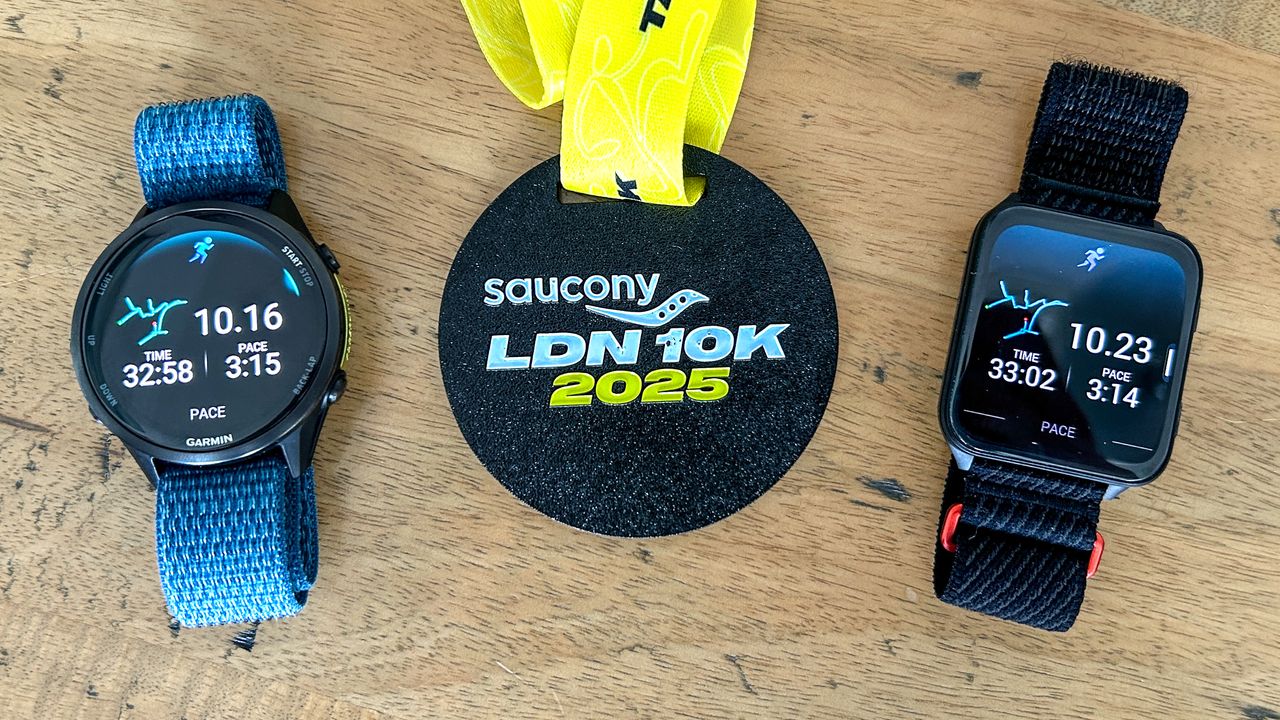
When I reviewed the Garmin Forerunner 970 earlier this year I concluded that it was the best sports watch available, with the only real competition being the Garmin Fenix 8, for those who wanted a more rugged and adventurous design.
However, I didn’t anticipate the launch of the Garmin Venu X1, which has surprised me in being one of the best Garmin watches, packing almost all the brand’s best sports and navigation features into a slim design with a huge square display.
The Forerunner 970 and Venu X1 are my two favorite sports watches at the moment, so I wanted to put them head-to-head at a race to see how they compared directly.
I raced the Saucony London 10K with both to compare their GPS accuracy on a twisting, city-center course, as well as battery life and their design differences.
I clocked 32:57 in the 10K race and while both watches were good, there were some notable differences between them on the day.
Design
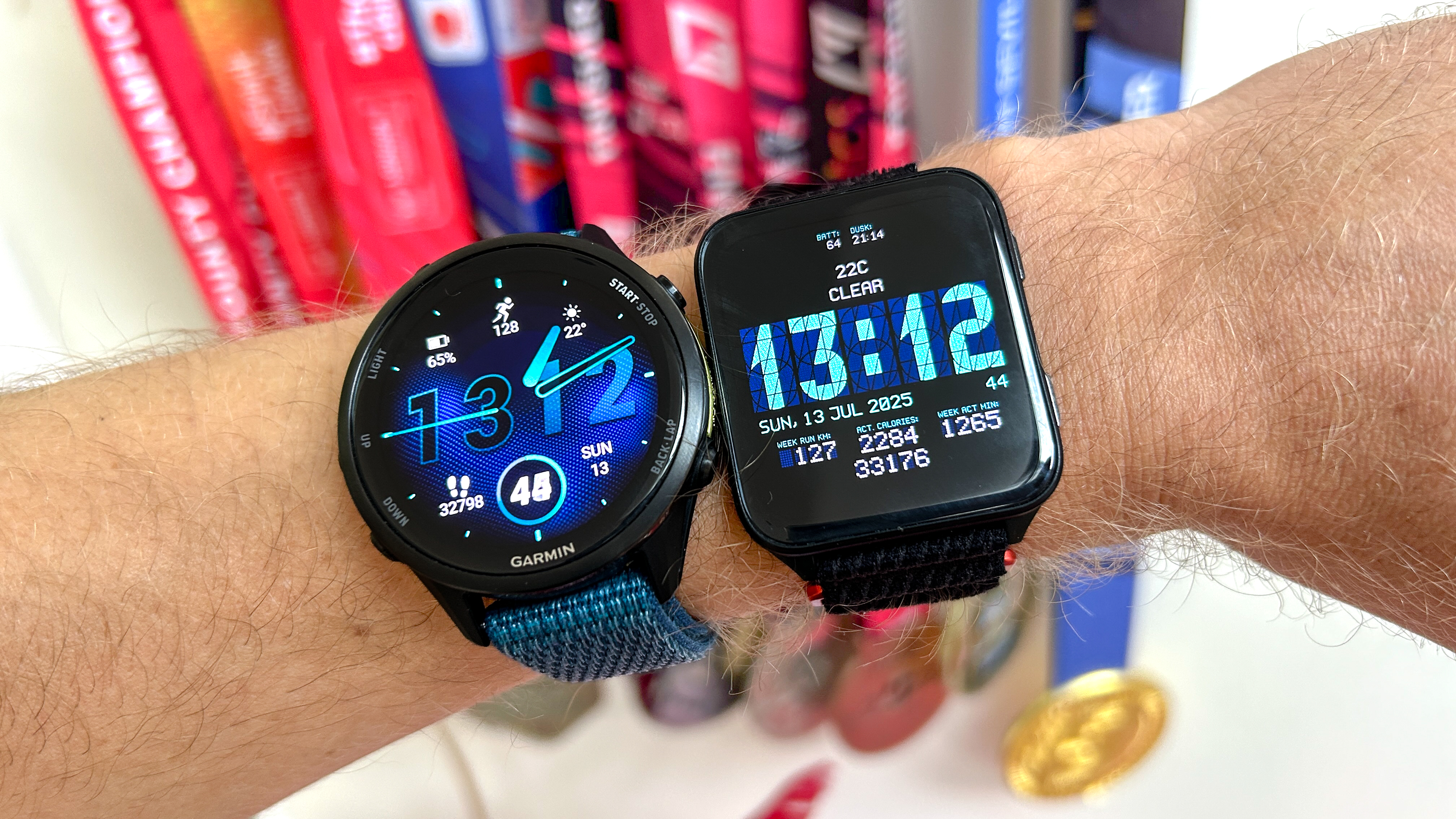
I’m a sucker for a slim watch, and the Venu X1 is slimmer than most, making even the Forerunner 970 feel quite big on the wrist.
The large square screen sits quite snugly on my thin wrist, and during the recent heatwaves the UK has been experiencing, I have preferred wearing the Venu X1 to the Forerunner 970 and other watches because it is so light and thin.
That large screen is also great for visibility, especially when using maps, but the Forerunner 970 also has a big, bright AMOLED display that’s easy to see in all conditions, including the mix of clouds and sun on race day.
One advantage to the Forerunner 970’s design is that it has five buttons, which makes navigating its menus and data screens during workouts easier — you’re more reliant on the touchscreen on the Venu X1, which can be harder to use with sweaty fingers.
Overall it’s hard to say which watch has a better design objectively. Both are sturdy thanks to their sapphire crystal screens and titanium elements on the case, and both have built-in flashlights. It will come down to your preference of slim and square vs the more traditional look of the Forerunner 970.
GPS Accuracy
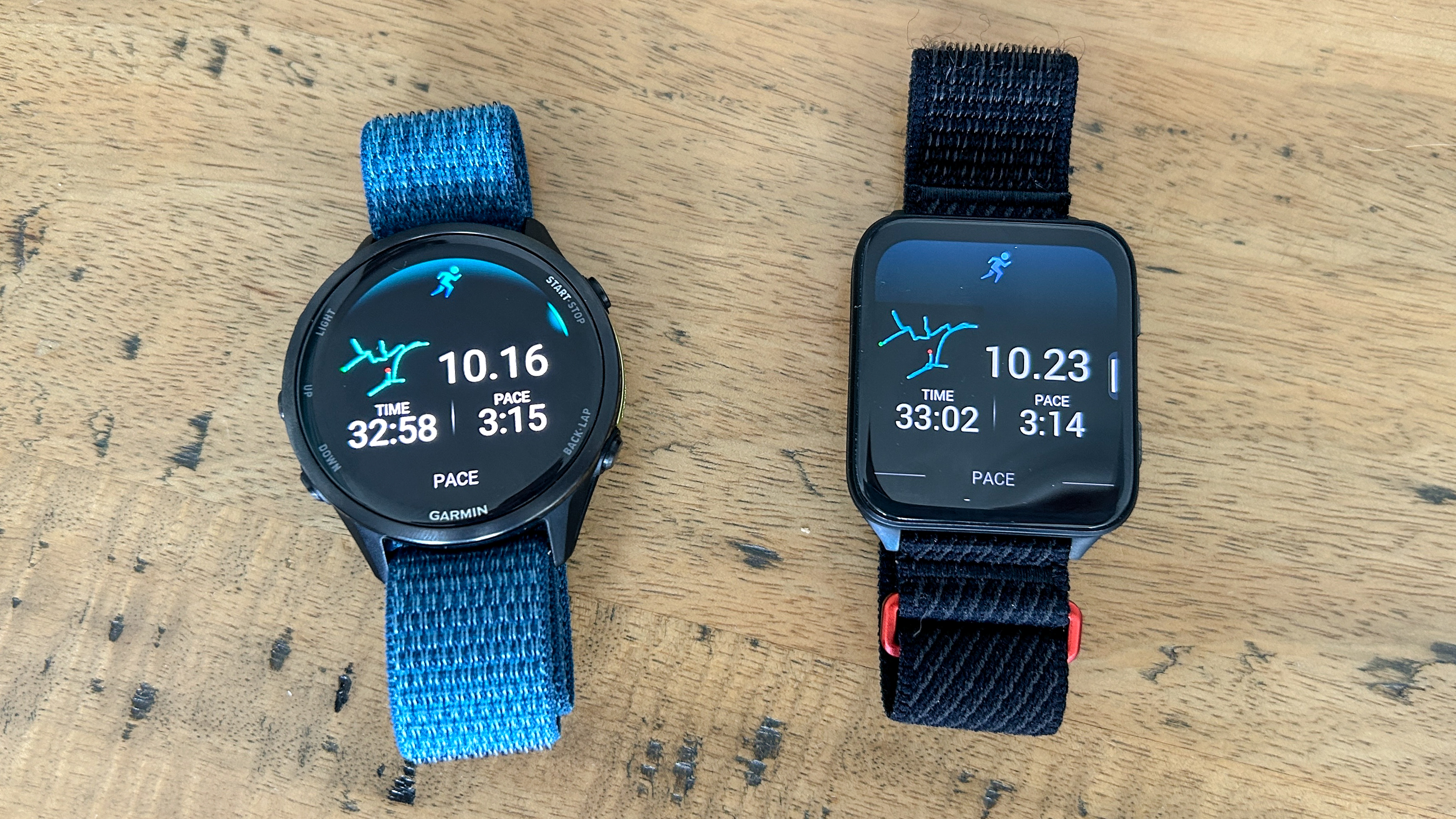
The key test for me on race day was GPS accuracy, because Garmin opted against having its most accurate multi-band GPS mode on the Venu X1.
It does offer all-systems GPS tracking, which has been reliably accurate for me in most of my testing of the Venu X1, but in city centers multi-band GPS can make a difference, and this was the case during the London 10K race.
I had the Forerunner 970 in multi-band mode and it was not only closer to the official distance for the race, it also was clearly more accurate at certain points on the course when I looked at the GPS tracks afterwards.
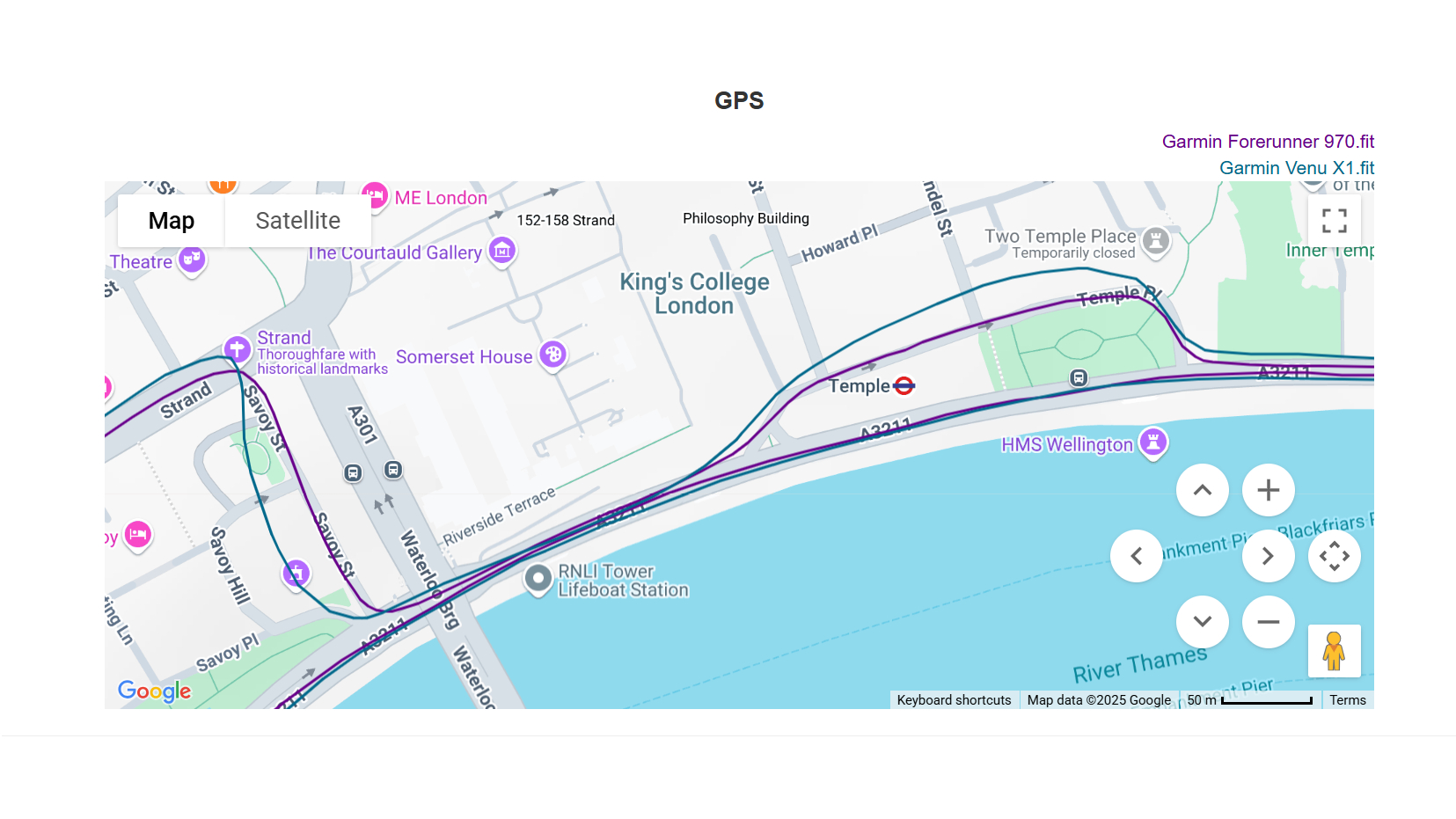
There were a couple of places where the Venu X1 swerved off the road and added distance, increasing my pace too, which I noticed in the race, while the Forerunner 970 stuck to the right path.
Overall the Venu X1 is certainly accurate enough, but if you live in a city center or another area where GPS tracking can be more difficult, the upgrade you get from multi-band GPS might be appreciated.
Battery Life
The lack of multi-band GPS is a small downside on the Venu X1, but its short battery life is a bigger drawback for those used to long-lasting Garmin watches.
During the race it drained at a rate of 7.2% per hour, which would amount to just shy of 14 hours of all-systems GPS tracking, which is in line with Garmin’s listed stats.
The Forerunner 970 was also in line with Garmin’s stats, draining at a rate 4.8% per hour, which adds up to almost 21 hours of more power-intensive multi-band GPS tracking.
With my general use, with their screens set to always-on, the Venu X1 lasts me two days on a charge and the Forerunner 970 four or five days.
Workouts using GPS really hammer the battery life of the Venu X1 — I did around 20 miles of running in total on Sunday because I did the race as part of a longer workout and those runs alone drained around 20% of its battery life.
Verdict
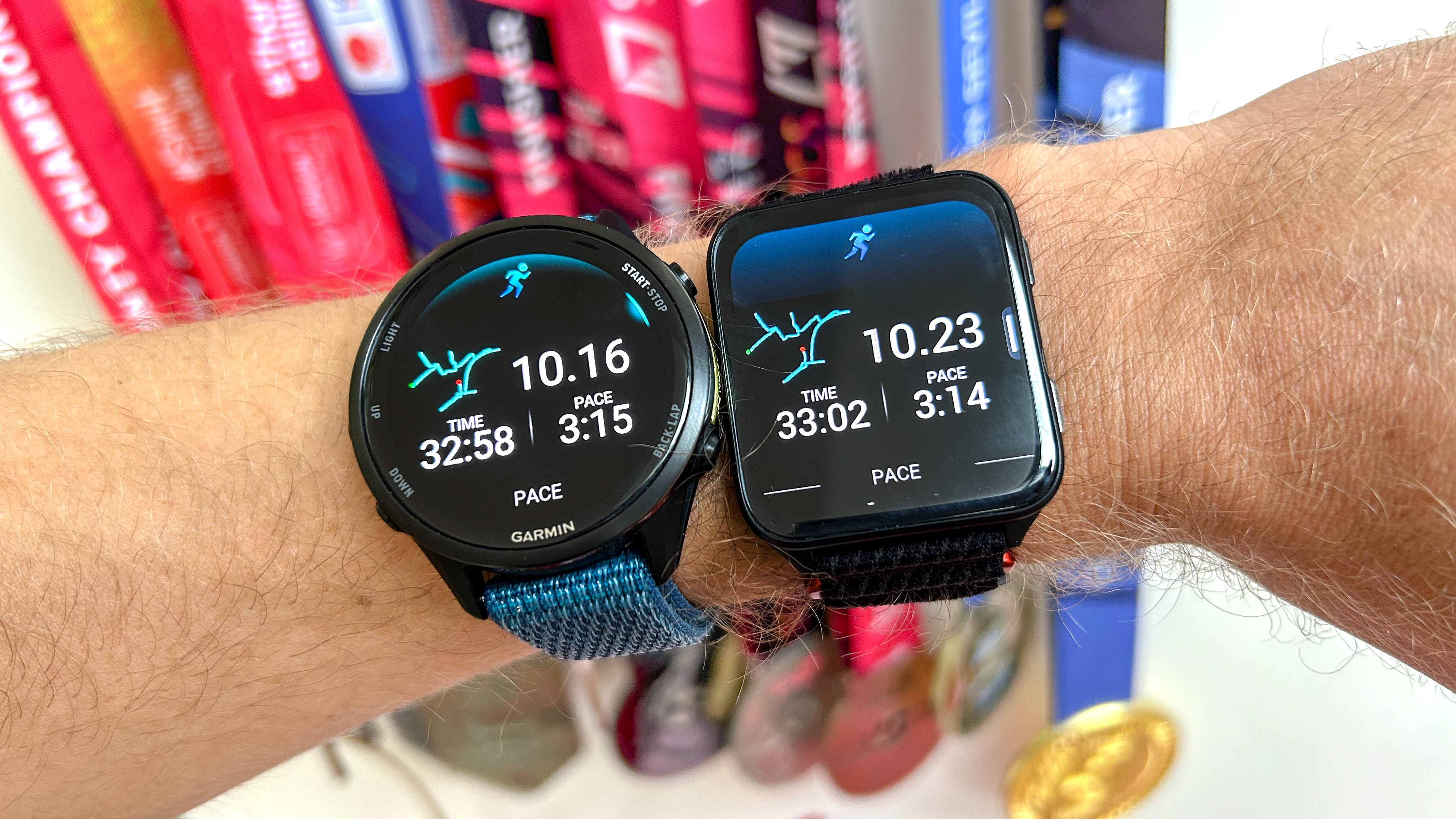
The Garmin Venu X1 is a great sports watch, but the Forerunner 970 is a better one purely on the basis of its extra GPS accuracy and battery life, and it performed better on race day.
Whether you’re happy to trade those in for the sleek design of the Venu X1 is another question, and one I still can’t conclusively answer myself, though I would lead towards the Forerunner 970 if you do most of your outdoor activities in a city center.
If you’re in less built-up environments like myself the GPS accuracy won’t be so noticeable and it is more a question of which design you prefer, with the Forerunner 970 having an edge for battery life and a slightly lower price.







